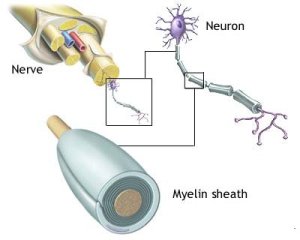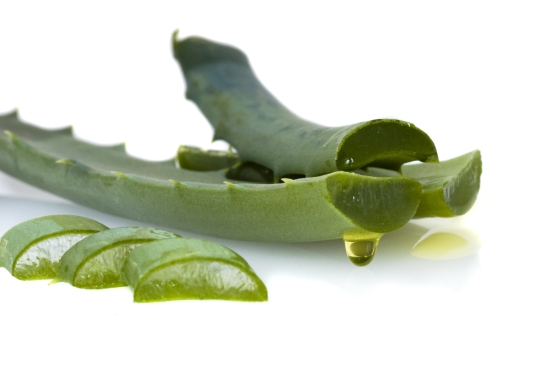What are the Common Symptoms of Diabetes and Cancer?
The most common symptoms of diabetes are fatigue, excessive thirst and appetite, blurred vision, slow healing sores, dry mouth, unusual weight loss or weight gain, nausea and perhaps vomiting, yeast infections, itching in the groin or vagina and increased urination. Both cancer and diabetes share symptoms of obesity, lack of physical activity, hyperinsulinemia, inflammation and poor diet.

Is There a Connection Between Diabetes and Cancer?
Diabetes and cancer both share the same risk factors. Researchers are trying to learn more about the link between type 2 diabetes and certain cancers (liver, pancreas, uterus, breast, colon and bladder). Common risk factors for diabetes and cancer include: 1) age, 2) gender, 3) race/ethnicity, 4) overweight, 5) smoking, 6) alcohol, 7) inactivity.
Could the Connection be Caused by the Diabetes Medication?
It is possible that the connection between cancer and diabetes is due to the diabetes medication, however more evidence is needed. Research shows that the implication of a cancer link to the medication is “less persuasive” however, it is important that research be conducted to rule out this as a contributing factor. In a consensus Statement by the American Association of Clinical Endocrinologists and the American College of Endocrinology, entitled, “Diabetes and Cancer – An AAE/ACE Consensus Statement,” Handelsman, Y., LeRoith, D., Bloomgarden, Z., and others concluded:

“Epidemiology demonstrated a significant increase of cancer in obesity, insulin-resistant states (i.e., metabolic syndrome and polycystic ovary syndrome), and ultimately diabetes.
Basic science has suggested plausible mechanisms linking these conditions to the development of cancer. Although medications to treat the hyperglycemia of diabetes have been implicated in increasing the risk of cancer, the totality of evidence is less persuasive, and there is a need for current vigilance and future research.”

Is There a Connecting Link with Obesity, Diabetes and Cancer?
Yes. The American Association of Cinical Endocrinologists and the American College of Endocrinology stated in there consensus statement, “Diabetes and Cancer,” that it is most likely that obesity is the strongest link between cancer and diabetes. Research shows that reducing caloric intake lowers the risk of cancer, and therefore, obesity in diabetics can increase the cancer risk. Handelsman, Y., LeRoith, D., Bloomgarden, Z., and others stated:
“After examining the relative contributions of obesity, insulin, IGF’s and diabetes to cancer development, it would appear that the most compelling scenario for cancer development may include a combination of prolonged obesity due to excess caloric intake plus the resulting increase of circulating insulin, IGF’s cytokines and inflammatory molecules. Compelling research in animals has shown that caloric restriction (>10 to 40% of daily intake) can prevent cancer development with diminished levels of IGF-1 believed to play a central role in mediating this effect.”
 What to Do to Reduce Risk of Diabetes or Cancer
What to Do to Reduce Risk of Diabetes or Cancer
- Eat Healthy Foods – The recommended diet for cancer prevention and diabetes prevention and maintenance is the same. A diabetes diet — medically known as medical nutrition therapy (MNT) for diabetes, is basically a diet consisting of a variety of nutritious foods in moderate amounts and eaten at regular mealtimes.
- Keep Weight Down – Studies show that increased weight gain and obesity lead to problems with diabetics and increased risk of cancer. For most people with type 2 diabetes, weight loss also can make it easier to control blood glucose and offers health benefits.According to the American Cancer Society, one out of every three cancer deaths in the United States is linked to excess body weight, poor nutrition, and/or physical inactivity. Body weight appears to have the strongest evidence linking it to cancer. The American Cancer Society reports that obesity contributes to as many as 1 out of 5 of all cancer-related deaths.
- Exercise and Keep Active – Exercise several times a day. If you have a sedentary job (one that keeps you sitting for most of the day), take breaks every two hours and do light stretching exercises). Research confirms that inactivity leads to diabetes and cancer.
The Medical Expenditure Panel Survey (MEPS) is a nationally representative survey of the U.S. population. From 2000 to 2002, detailed social, demographic, and medical information was collected for 68,500 adults. The researchers concluded that “both physical inactivity and obesity seem to be strongly and independently associated with diabetes and diabetes-related diseases cormorbidities.” Scientists have shown that low levels of physical activity can increase the risk of certain cancers (bowel cancer, breast cancer, womb cancer, and others). A December 2011 study estimated that in about 1% of cancers in the United Kingdom, more than 3,000 cases every year are linked to people doing less than government suggested guidelines for weekly physical exercises and activities.
- Do not smoke cigarettes or other carcinogenic materials. If you are already smoking, stop. If you haven’t started smoking, don’t begin. Multiple studies confirm the increased risk of cancer in those who smoke. However, is the same risk true for diabetes? Research confirms that smoking can cause the development of Type 2 diabetes. According to research from the American Heart Association, about 22% of adults with diabetes smoke, even though U.S. research indicates that the most harmful effect of smoking is linked to a significantly higher risk of developing Type 2 diabetes.The University of Lausanne in Switzerland, studied more than one million patients and found that smoking creates a 44% higher chance of developing Type 2 diabetes compared with non-smokers, and that the risk increases with the average number of cigarettes smoked daily.
Studies show that diabetes and cancer share the same risk factors. More research is needed to determine if there is a link between the two.
RESOURCES
- American Diabetes Association – “Obesity, Inactivity, and the Prevalence of Diabetes and Diabetes-Related Cardiovascular Comorbidities in the U.S., 2000–2002”
- American Diabetes Association – “Diabetes and Cancer”
- Cancer Research UK – “Physical activity and cancer: stats and evidence”
- Mayo Clinic – “Diabetes diet: Create your healthy-eating plan”
- Diabetic Care Services and Pharmacy “Diabetes & Smoking: The Health Effects of Smoking with Diabetes”
- American Cancer Society – “Does body weight affect cancer risk?”
_________________________________
 This article is written by Jean Voice Dart, M.S. Special Education from Illinois State University. Jean is a published author and has written hundreds of health articles as well as hosting a local television program, “Making Miracles Happen.” She is a Registered Music Therapist, Sound Therapist, and Master Level Energetic Teacher, and is the Executive Director, founder and Health and Wellness Educator of the Monterey Bay Holistic Alliance. The Monterey Bay Holistic Alliance is a registered 501 (c) 3 nonprofit health and wellness education organization. For more information about the Monterey Bay Holistic Alliance contact us or visit our website at www.montereybayholistic.com.
This article is written by Jean Voice Dart, M.S. Special Education from Illinois State University. Jean is a published author and has written hundreds of health articles as well as hosting a local television program, “Making Miracles Happen.” She is a Registered Music Therapist, Sound Therapist, and Master Level Energetic Teacher, and is the Executive Director, founder and Health and Wellness Educator of the Monterey Bay Holistic Alliance. The Monterey Bay Holistic Alliance is a registered 501 (c) 3 nonprofit health and wellness education organization. For more information about the Monterey Bay Holistic Alliance contact us or visit our website at www.montereybayholistic.com.
Disclaimer: The Monterey Bay Holistic Alliance is a charitable, independent registered nonprofit 501(c)3 organization and does not endorse any particular products or practices. We exist as an educational organization dedicated to providing free access to health education resources, products and services. Claims and statements herein are for informational purposes only and have not been evaluated by the Food and Drug Administration. The statements about organizations, practitioners, methods of treatment, and products listed on this website are not meant to diagnose, treat, cure, or prevent any disease. This information is intended for educational purposes only. The MBHA strongly recommends that you seek out your trusted medical doctor or practitioner for diagnosis and treatment of any existing health condition.








 Spinach can be very helpful in preventing osteoporosis. If spinach is boiled, one cup provides over 1000% of the RDA of vitamin K that can prevent excess activation of osteoclasts. Osteoclasts are the cells that break down bones. Spinach can also increase the synthesis of osteocalcin. Osteocalcin is the protein that is essential for maintaining the bone density and strength.
Spinach can be very helpful in preventing osteoporosis. If spinach is boiled, one cup provides over 1000% of the RDA of vitamin K that can prevent excess activation of osteoclasts. Osteoclasts are the cells that break down bones. Spinach can also increase the synthesis of osteocalcin. Osteocalcin is the protein that is essential for maintaining the bone density and strength.





 Half the patients took liquid aloe vera three times a day in combination with standard chemotherapy treatment. In this study the
Half the patients took liquid aloe vera three times a day in combination with standard chemotherapy treatment. In this study the


 This article is written by Jean Voice Dart, M.S. Special Education from Illinois State University. Jean is a published author and has written hundreds of health articles as well as hosting a local television program, “Making Miracles Happen.” She is a Registered Music Therapist, Sound Therapist, and Master Level Energetic Teacher, and is the Executive Director, founder and Health and Wellness Educator of the Monterey Bay Holistic Alliance. The Monterey Bay Holistic Alliance is a registered 501 (c) 3 nonprofit health and wellness education organization. For more information about the Monterey Bay Holistic Alliance contact us or visit our website at
This article is written by Jean Voice Dart, M.S. Special Education from Illinois State University. Jean is a published author and has written hundreds of health articles as well as hosting a local television program, “Making Miracles Happen.” She is a Registered Music Therapist, Sound Therapist, and Master Level Energetic Teacher, and is the Executive Director, founder and Health and Wellness Educator of the Monterey Bay Holistic Alliance. The Monterey Bay Holistic Alliance is a registered 501 (c) 3 nonprofit health and wellness education organization. For more information about the Monterey Bay Holistic Alliance contact us or visit our website at 






















